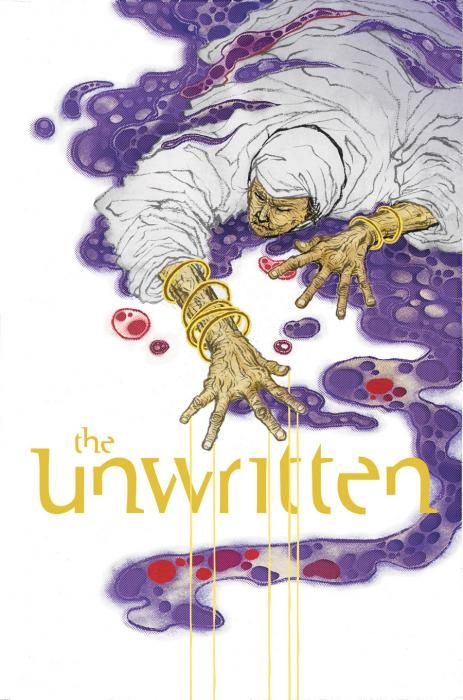Much of our main cast remains absent in "The Unwritten" #38, including protagonist Tom Taylor -- and due to this absence, it has the inevitable feeling that we're moving within the secondary lines of action. This reinforces the feeling that "The Wound" is a slower, smaller story counterpoint to the epic quality of the previous story arc, "The War of the Words."
As usual, Mike Carey packs a lot of plot into one issue of "The Unwritten." This time, the narrative is a straight linear thread. It lacks the literary, experimental flair of say, "The Unwritten" #17, which featured a wild choose-your-own-adventure format. With a series like "The Unwritten," it's tempting but probably unfair to compare this issue with the best or most ambitious issues of the series so far, which is a high bar.
This issue feels like detective fiction more than anything else, and doesn't flesh out more of the high concept of what Carey is driving at on at a meta-level in "The Wound," which has something to do with the idea of a world without stories. "The Unwritten" has distinguished itself with the large amount of meta-commentary on literature and what stories mean to us, but in previous storylines the mythos and conceptual elements were more closely blended with the day-to-day action. "The Wound" has two more issues to go, however, so it's too early for a definitive statement on whether Carey's ambitious concept will yield dividends as the mystery is solved.
The story flips between Richie Savoy in the Swiss Alps and Detective Didge Patterson in Australia. Although the two storylines have not converged yet, they both feel a part of the same tapestry because they wind around themes of alienation, desperation and concealment.
Colorist Chris Chucky keeps the internal colors of this issue dark, in keeping with the grim events and the mood of the main actors at this point. The color work on the last double-page spread is lovely, with dark green and blue shades of grey accented by red and the palest lemony yellow, in harmony with Gross' exceptional inks for this visual punch of an ending. The lead-up to the final spread is a fantastic example of visual storytelling, in which both a character and the reader are led around in the dark, anxiety and tension building, until we reach a scene of mystery, revelation and light at the end of the issue.
Peter Gross's characters always have faces that seem carved out of wood. Subtle facial expression is not one of his strengths yet, and neither are any of his action scenes very kinetic. Put concisely, his art lacks a sense of motion and age. However, the sense of depth in his panels is excellent, even in interiors such as the bar in the opening pages. Small individual panels have lovely composition, such as an ominous flight of birds from a window. More importantly, his panel-to-panel transitions are flawlessly smooth, so much so that it's tempting to take that kind of storytelling ease for granted, because like ballet, when it's really good, it looks so easy. Such is also the case with Todd Klein's lettering.
The teamwork on "The Unwritten" #38 is great, with all the creative talent supporting each other. While the issue in the context of the whole series may not be a stunner, upon further examination it is a solid piece of work and will keep readers invested in the current story arc.

